Mariangela Susigan: Sustainability as a Maternal Heritage
We talked about sustainability, Michelin green star, memories and new generations with Chef Mariangela Susigan, queen of her Piedmontese “Gardenia” restaurant.
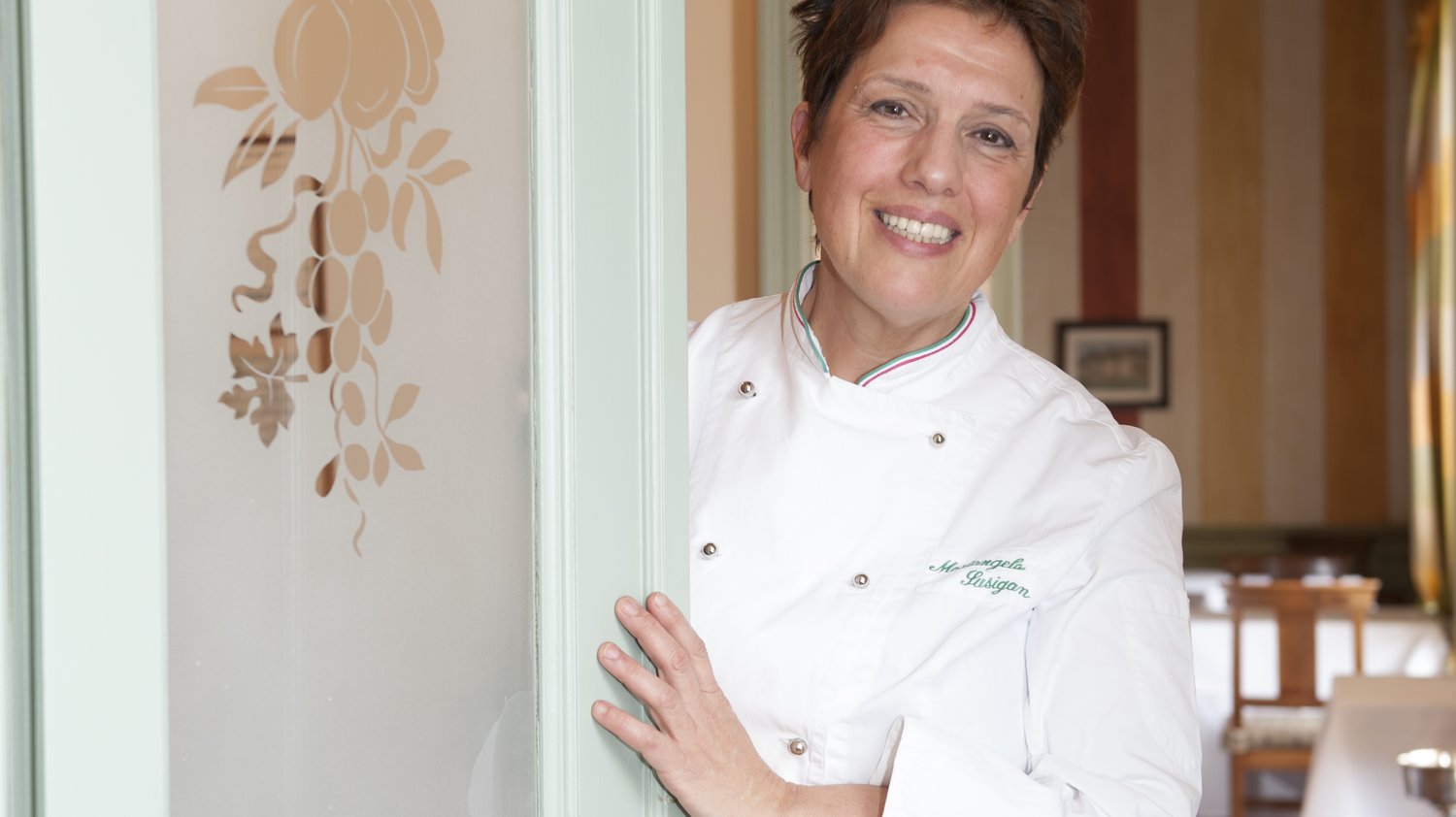
We are in Caluso, a history-rich medieval village located in a strategical geographic area near Turin. This beautiful little town also hosts one of the most interesting restaurants in Italy: Mariangela Susigan’s “Gardenia”, awarded with one Michelin red and green star.s
Due to her personal story, the French-Italian Chef became one of the most important reference points in the sustainable gastronomy panorama. With her we talked about heritage, nature and responsibility, about beauty and effort.
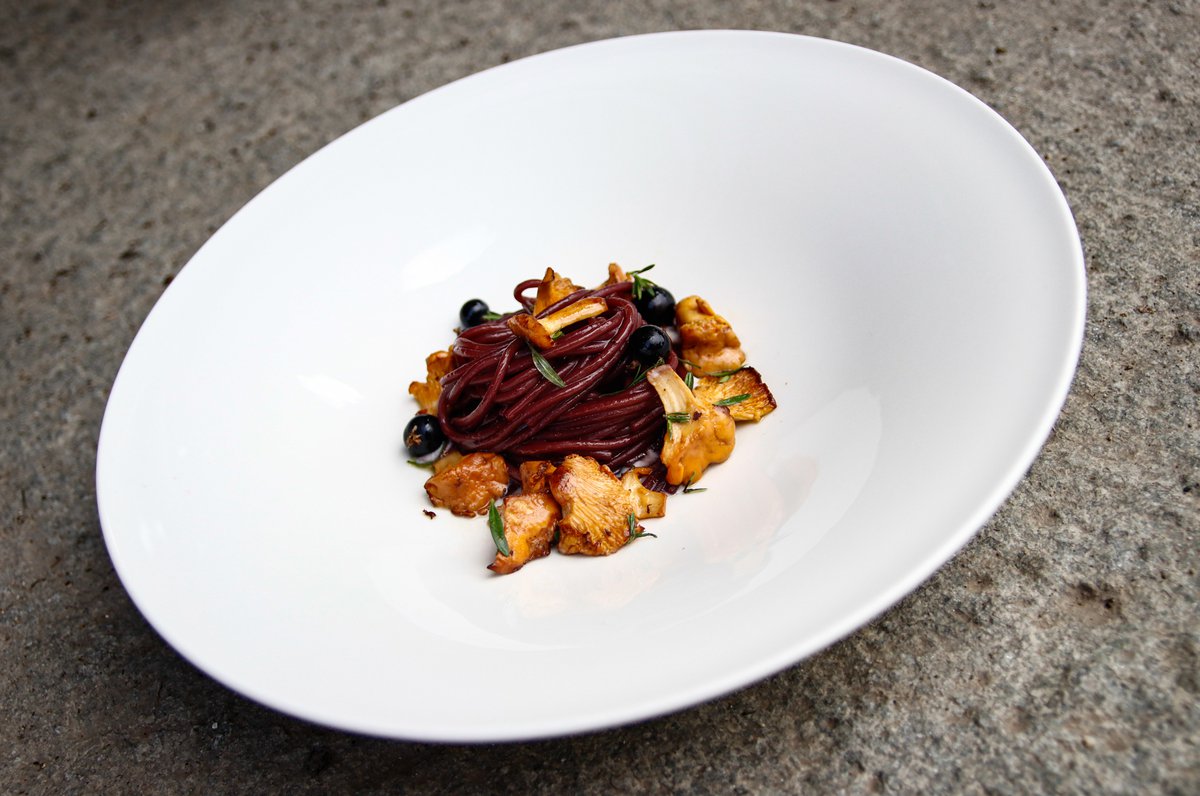
Could you tell us your story?
My story takes place in between France, where I was born, and Italy. I definitely had a great luck: both my parents were involved in the hospitality field since they always worked, as a couple, in several French castles. My father was taking care of the farms and the gardens, while my mother was a cook. Right after my birth, we moved back to Caluso where, in 1977, we opened our first restaurant: a 1.0 version of the actual Gardenia. I started by serving at the tables for some years, to then pass next to my mother in the kitchen and gradually experiment my own recipes, beyond her traditional Piedmontese ones. Basically a double menu, two parallel philosophies: try to imagine the happiness of our clients!
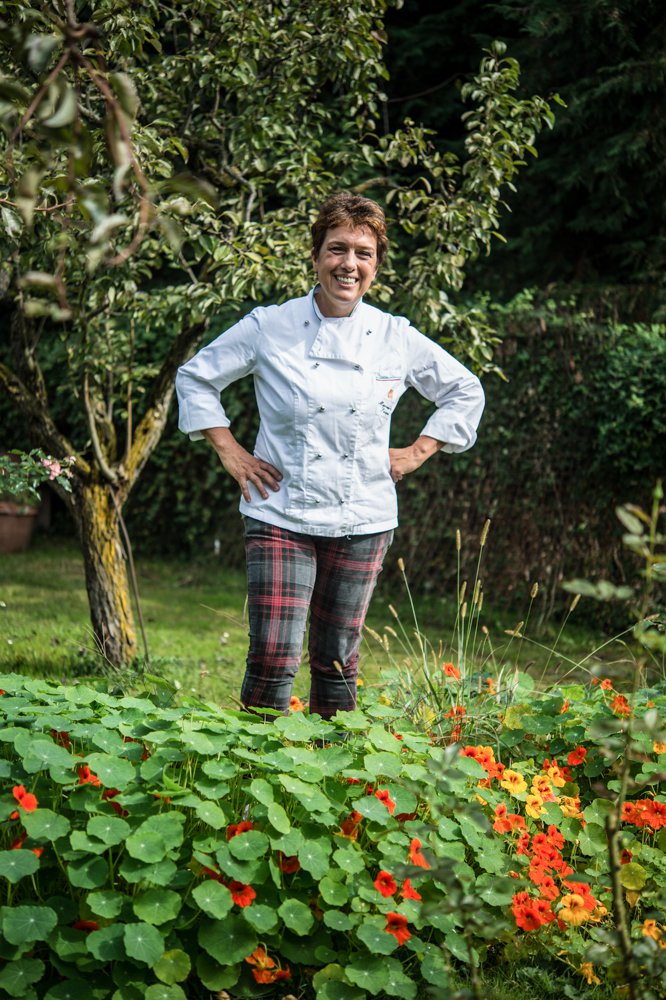
How would you define your cuisine?
Tasty, aesthetically positive and sustainable. I really feel my mother’s influence on this.
Her habit, even though applied in a more classic way, was always oriented towards excellent produce, fresh and local, even when environmental problems were not existing.
We were eating small quantities of high quality meats, we had a big farm and used to practice foraging weekly: a dinner could consist of a fried egg with wild herbs or salads and some cheese, or in a soupy “minestra” with rice or potatoes. A transparent and direct taste, rare to be found nowadays, but nonetheless extremely valuable.
And that’s exactly how I cook: the ingredients are highlighted, are the center of the dish. It is a genuine "Terroir” cuisine, just filtered through an extra-fine layer of other countries cultures. An healthy and respectful techniques appropriation, which allows us to rediscover our land in a totally surprising new way.
So, even if some of my courses are traditional, most of them are personal and centered around plants. They talk about specific places and moments, and transmit emotions through shapes and colors.
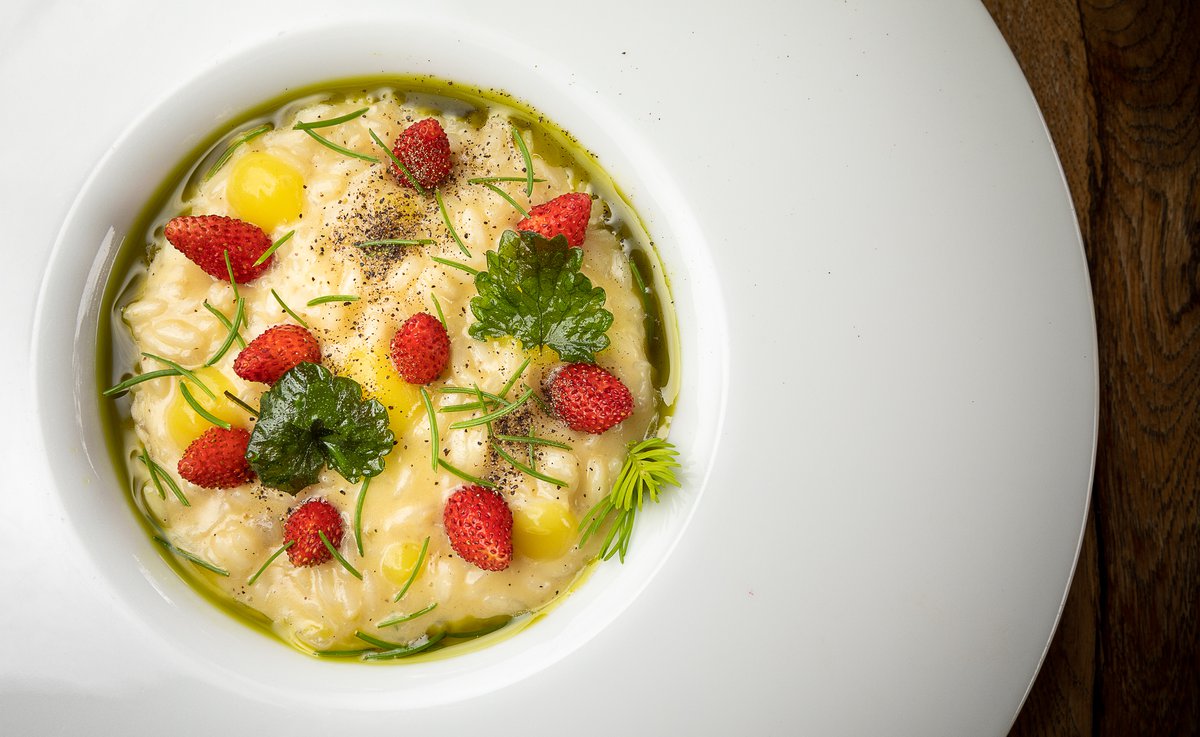
Herbs are fundamental at Gardenia. Why did you start studying them?
Around twenty years ago, to relax myself during closing days, I was having long walks in the Valchiusella mountainous area. In those occasions I used to find beautiful herbs everywhere. Therefore my curiosity pushed me, thanks to the help of expert guides, to start foraging these precious spontaneous “gems”; and they always marked my creations since day one.
Nowadays I approximately know a hundred of them: you need to be familiar with the super short seasonality and with the different land and environment typologies.
In this zone is a very old and common practice: taking care of your cows, in order to produce cheese, while picking up some wild herbs for your dinner used to be an every-day-necessity mechanism. I find interesting how internet managed to spread the voice of these ancient gestures, helping them to survive. Sometimes foraging is considered innovative, even though it’s not; but it is also true that for new generations it becomes a particular and indeed “new” act. It’s fascinating.
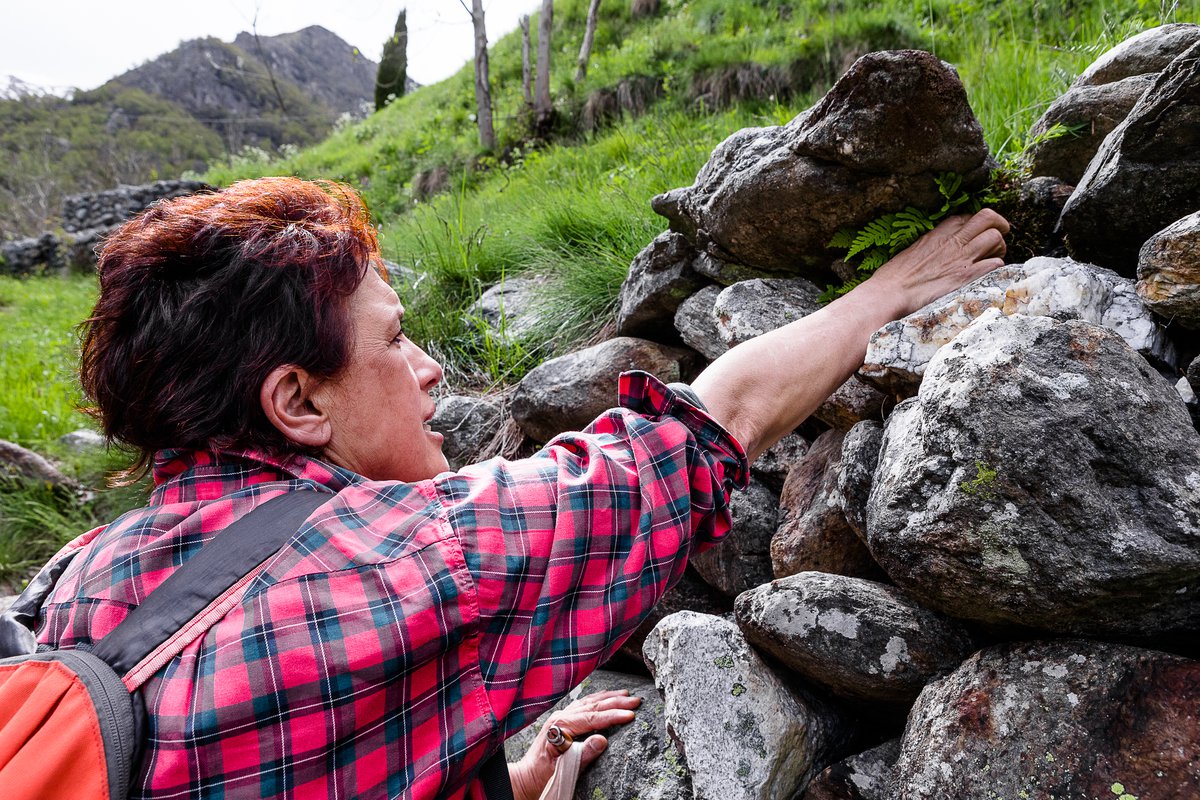
Sustainability. What does the “green star” mean to you?
We’ve been awarded with the Michelin green star more than twenty years after the red one, and it was a beautiful proof of the hard work we carried on every day at Gerdenia. Even though for me certain behaviors are simply a maternal heritage, a sort of treasure hidden in my veins.
Sustainability, here, goes beyond a limited consumption of animal proteins and focuses on Ethnobotany, studying the usage of plants in our specific culture, while understanding their benefits in foods. This pushes us to go deeper in our activity and become more useful to the ecosystem we find ourselves in.
Automatically, we want to sustain small and ethical local producers: they represent that precious niche of beauty, so fundamental for our Country’s rich heterogeneity.
A lot of the produce we use comes from our farm: the green space we own became quite extended and counts hundreds of varieties of fruits, vegetables, herbs and flowers. Everything gets used, each and every single part, perhaps in ferments or stocks; and the organic waste becomes compost, to respect the natural cycle of life.
A good example is my “Ramen in Canavese”, made with hemp noodles, rocket salad kimchi, roots skins broth and local beans miso. Everything aims to find a not impactful way of working with ingredients from our surroundings.
And then there’s another type of sustainability: the social one. We are engaged in several inclusive projects for immigrants and refugees, and we distribute food or farm leftovers to few organizations. Those are, possibly, the biggest satisfactions in our path.
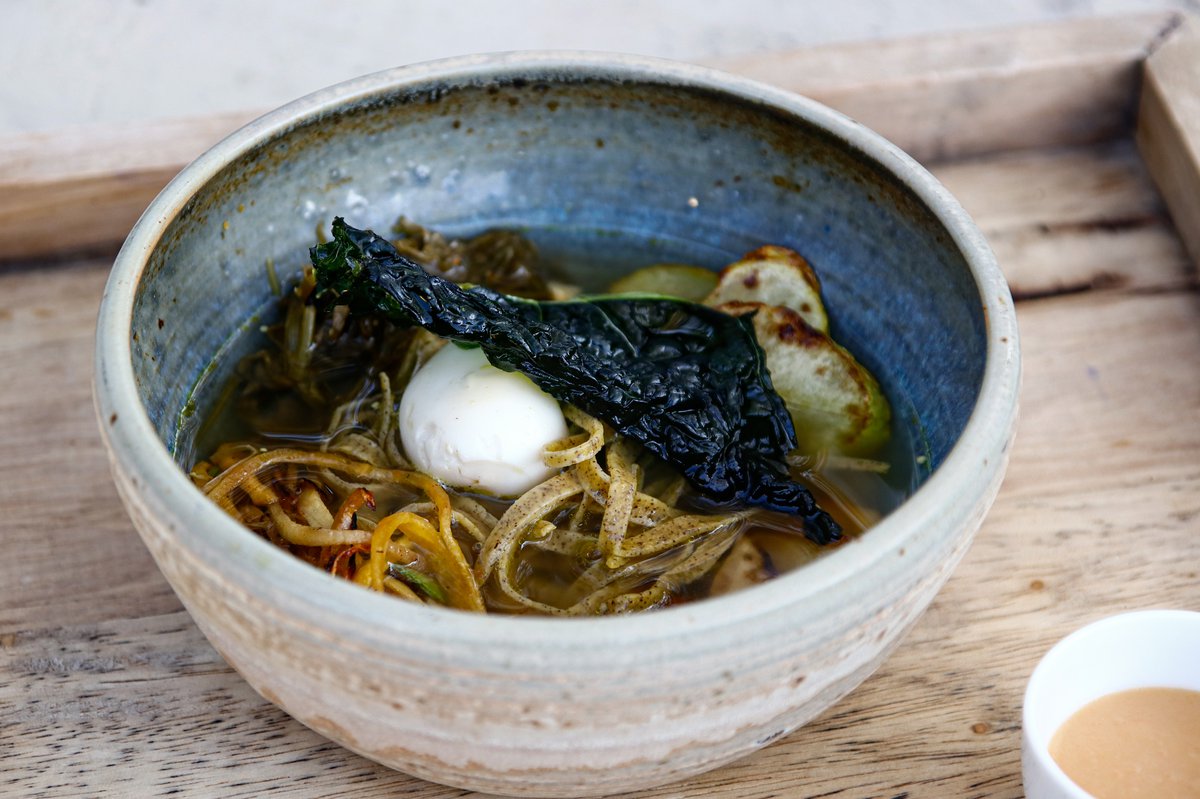
Which suggestions would you give to a young student?
In the last few years, food-themed television programs were incredibly popular and lately the social media video “flood” completed the job. Honestly speaking, I believe these tools to be extremely useful: they might bring families closer to the topic. Talking more and more about something extends both knowledge and sensibility. Young students will need to grow and be aware of “what’s the right thing to do”, cultivating the raw talent sleeping within themselves.
Obviously we all know how much personal sacrifice this activity requires: you surely need a strong passion, a huge interior fire and the ability to adapt our private life according to other’s needs. You also need a lot of practice, becoming a chef is a serious effort. Culinary, human ed economic cultures: three solid bases for a brilliant satisfying career.
You can rediscover nature’s gentle strength and elegance, together with Chef Susigan, in her enchanting Canavese microcosm.
A direct yet subtle cuisine, kind and positive, following our contemporary rhythms and Earth’s ancient ones. A beautiful synergy between society and natural ecosystem.
